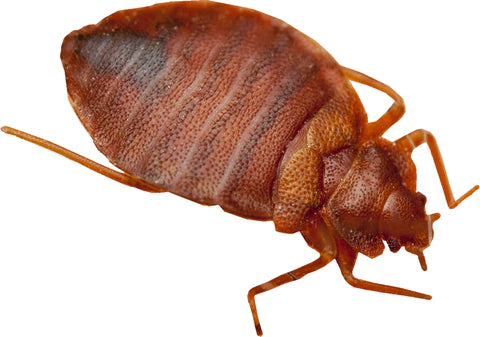Bedbugs are small, wingless insects that feed exclusively on the blood of warm-blooded animals. Humans are the preferred hosts for the two main species.
There are two species of bedbugs that are known to feed on human blood. They are known scientifically as Cimex lectularius and Cimex hemipterus. They have been found in the tombs of ancient Egyptians from 3,500 years ago.
Over millions of years, bedbugs have evolved as nest parasites, inhabiting the nests of birds and the roosts of bats. Some of them have learned to adapt to the human environment.
Newborn bedbugs, called hatchlings or nymphs, are tiny but visible and about the size of a poppy seed. Adults grow to about 0.25 inches long with an oval and flattened shape when they are not feeding. After feeding, they can double in size. Nymphs, eggs, and adults are visible to the naked eye.
They are called bedbugs because of their preferred habitat in human homes: Sofas, bed mattresses, clothing, and other soft furnishings. They also prefer the dark.
Bedbugs are seen as a growing problem within all types of dwellings, including private homes, dormitories, cruise ships, army barracks, and shelters.
When seen close up, their color may range from a white, light tan to a deep brown or burnt orange color. When they have fed, a dark red or black blob may be observed within their body. They seek shelter in dark cracks and crevices when disturbed.


Fast facts on bedbugs
- Bedbugs are small wingless insects that feed on the blood of warm-blooded animals.
- Most bedbugs feed on their hosts while they are asleep.
- The peak time for feeding is between midnight and 5 am.
- Bites can be seen quickly but may take up to 14 days to become visible.
- Bed bugs need to feed regularly to reproduce, lay eggs and survive.
Treatment
Treatment focuses on relieving symptoms and includes:
- topical creams, such as cortisone, to relieve itching
- an oral antibiotic, if infection occurs because of skin irritation around the bite
- corticosteroids, if a person has a severe allergic reaction
- antihistamines, to help relieve allergic reactions
Most bites heal within 1 and 2 weeks of occurrence.
Some of these treatments are available for purchase online, including cortisone and antihistamines.





